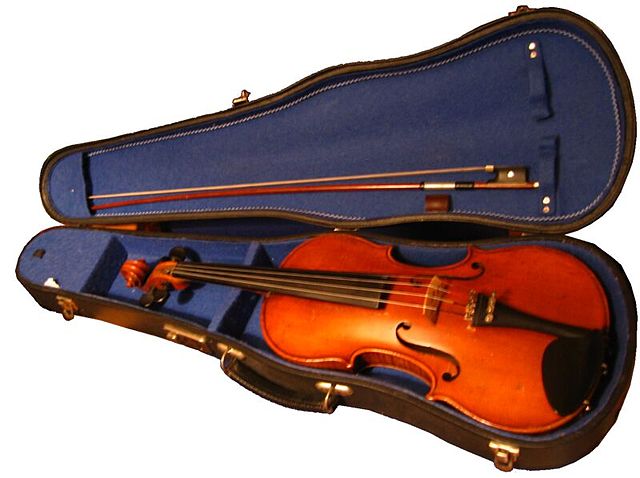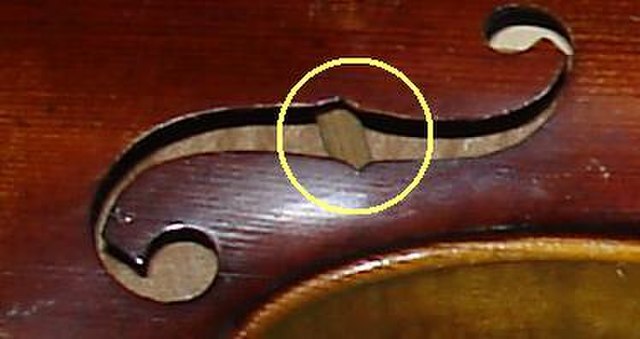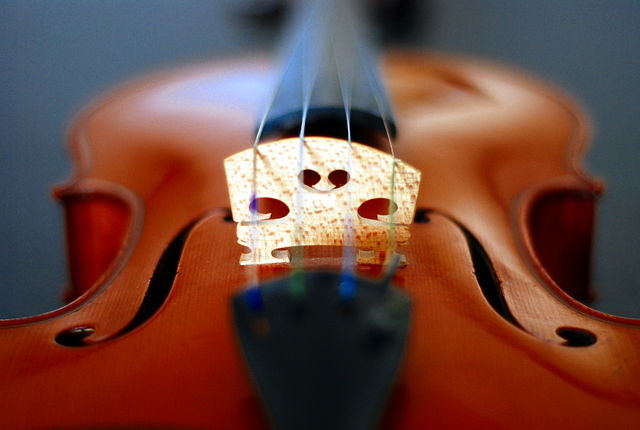Are violins fragile? How much care do violins need to stay in tip-top shape? How do you protect your violin from damage and accidents?
In this article, we’ll dive deep into how fragile violins are and what you can do to maintain them, so stick around!
10 Second Summary
Violins aren’t that much more fragile than other instruments. They need a little more care than guitars, for example, but care is similar.
Some components within the Violin are considered fragile, like the bridge, pegs, and soundpost. Always keep your violin in a humid controlled case at standard room temperature to avoid damage.

Table of Contents
How Easily Will a Violin Break?
While it depends on your specific violin and the conditions it’s usually stored in, it’s generally easy to break most violins.
At the wrong angle or spot, a simple bump can cause enough damage to change the violin’s sound.
It also comes down to how well-informed you are. A task as simple as cleaning your violin, for example, can either result in a shiny, well-maintained instrument or a heavily damaged one if you don’t know what you’re doing.
Will a Violin Break If I Drop It?
A violin will probably break if dropped. The impact will almost certainly affect the violin, but it won’t necessarily damage it.
The bridge, soundpost, and pegs are the three most likely things to be affected. This will probably cause the violin to become out of tune.
Even if you drop it on something padded like carpeting or grass, any of those three could still move out of place. The bridge can snap and may need to be replaced.
If you can hear something rolling inside the violin, that means that your soundpost fell. If that’s the case, do not try to tune the instrument and take it to a luthier.
Adding tension to the strings while the soundpost is not in place can create enough pressure on the violin’s thin body to actually crack it, causing serious—and costly—damage.

What About Violin Strings?
There are way too many subtle reasons why violin strings can break, and you’re sure to learn that during your time playing.
The single most important thing to do to minimize the chances of that happening is paying your luthier a regular visit to check every point of contact between the violin and its strings.
Another reason why strings could break a lot is how you restring them. A simple mistake like wounding the peg too vigorously can cause them to snap frequently.
What About the Weather?
Very humid or dry weather, sudden changes in temperature, high heat, and especially rain can all have detrimental impacts on your violin.
This is why high-end cases now come with humidity and temperature gauges.
What Is the Most Fragile Part of the Violin?
The bridge is by far the most fragile part of the violin and is often the first thing to get damaged in case of an accident. This is because of how thin it is and the amount of pressure applied on the bridge by the strings.

Almost all falls will, if anything, result in the bridge being moved out of place, falling out completely, or collapsing under the strings. Luckily, fixing a problem with bridges isn’t too “invasive” or expensive.
Do Violins Need to Be Kept in a Hard Case?
Violins should always be kept in a hard case. Soft cases won’t do much for you if your violin takes a hit. Hard cases are highly recommended for all types of violin and are a necessity for valuable violins.
Of course, soft cases are far cheaper than hard cases, which is why most beginners go for them. Unfortunately, purchasing a soft case can be a waste of money and will offer little to no protection in the event of a drop.
Is It Ok to Leave a Violin Out of Its Case?
We don’t recommend leaving your violin out of its case for an extended period of time. Your violin should either be in its case or on your shoulder; nothing in between. The main reason behind that is obvious: you want to protect your violin from dust, spills, falls and any other accidents at all times.
But another reason is that most hard cases will offer at least some level of protection against weather conditions such as big changes in temperature or variance in humidity.
As we mentioned earlier, these conditions make a huge difference in how your violin sounds and even how long it lasts.
Are Violins More Fragile Than Other Instruments?
While they’re more fragile than some, violins are not particularly fragile compared to other string instruments. In fact, even brass instruments are pretty fragile and equally susceptible to weather conditions despite—or perhaps because of—being made out of metal.
So if you’re trying to decide what instrument to learn based on durability, you’ll find that there’s barely any difference. Yes, there are some extremely fragile instruments (have you seen glass armonicas?) but violins are just like any other musical instrument; they need to be handled with care and kept in the right conditions.
Are Older Violins More Fragile?
Old violins do get more fragile with time. The organic material violins are made of can degrade with time, especially if it’s played a lot or exposed to unfavorable conditions like lots of humidity changes, temperature changes, or accidents.
But violins sound better the more they’re played, so most older violins sound pretty vibrant. It’s not very clear why this happens, but an abandoned violin—or any string instrument in general—will sound off while a “seasoned” instrument will sound noticeably better.
That’s not to say that all old violins are great or inherently valuable; those that weren’t regularly maintained will lose their integrity over time. Commercially made violins also don’t gain value as they age.
Violin fraud is more common than you’d think; you start shopping for your next high-quality vintage violin only to get a squeaky old thing.
A lot of people make the mistake of buying these anyway in hopes that it’ll sound better when it’s played in, but this may not happen. A good violin will sound good right off the bat.
How to Travel With a Violin
Traveling with an instrument, in general, is extremely daunting; we all know how bags are handled in transit. This is why it’s always best to keep your instrument with you at all times if possible.
The best way to travel with a violin is to buy an extra seat for it next to you. This ensures that you’ll have it on you at all times, no one else will get a chance to mishandle it, and you won’t have to stress about it for however long your trip is.
For some companies, however, this is not an option. If that’s the case, it’s important to ensure your violin before the trip, tag it as a fragile instrument, add handling clear and concise handling instructions on its case, and put your details on it for shipping in case it was lost.
Tips on Traveling With a Violin
This topic warrants its own article, but there are a few non-negotiable things to keep in mind while traveling so your violin wouldn’t get damaged right off the bat.
- Put it in a hard case. If the section about hard cases hasn’t convinced you already, know for sure that traveling with a soft case is just asking for trouble.
- Loosen the strings. Due to weather changes, tuned strings can get tighter, causing damage to the violin. The bow hair should also be loosened up for the trip.
- Make sure it’s suspended. Modern higher-end cases will come with a suspension system that ensures that your violin doesn’t hit the inside of the case. If your case doesn’t have that, you can bubble wrap it or pad the violin’s space with corrugated paper.
Can You Take A Violin On a Plane?
The policies for instruments are different from one airline to another, but it’s generally possible to take your violin as a carry-on or even buy it its own seat.
However, you should get an email confirmation from your airline of choice before purchasing the ticket. Print this email and keep it on you to avoid any issues or misunderstandings.
Another thing to know is if you’ve bought an extra seat for your instrument, you shouldn’t pay any extra fees. Again, this is something you’ll need written confirmation from your airline’s customer service.
Can Violins Get Wet?
Violins should never get wet. In fact, you should never even wipe a violin with something wet. This is one innocent mistake that a lot of new violinists make early on.
A violin should never get wet and should never be exposed to high or low humidity (should be kept between 40-60%). Also, it should be taken to a luthier if it came in contact with any liquid.
This is due to its materials. The thin wood of the violin can soak up the moisture and expand, cracking up in the process. More importantly, the varnish and glue used to hold the violin together are water-soluble.
Even if your violin isn’t made of wood like some electric violins, they’re still affected by moisture. A moist bow will almost certainly not play the strings and may even ruin them.
Final Thoughts
So, are violins fragile? Well, they’re not that much more fragile than other stringed instruments. They do, however, have components that are considered fairly fragile, including the soundpost, pegs, and bridge. That being said, violins need to be handled with more care than, for instance, a guitar.
